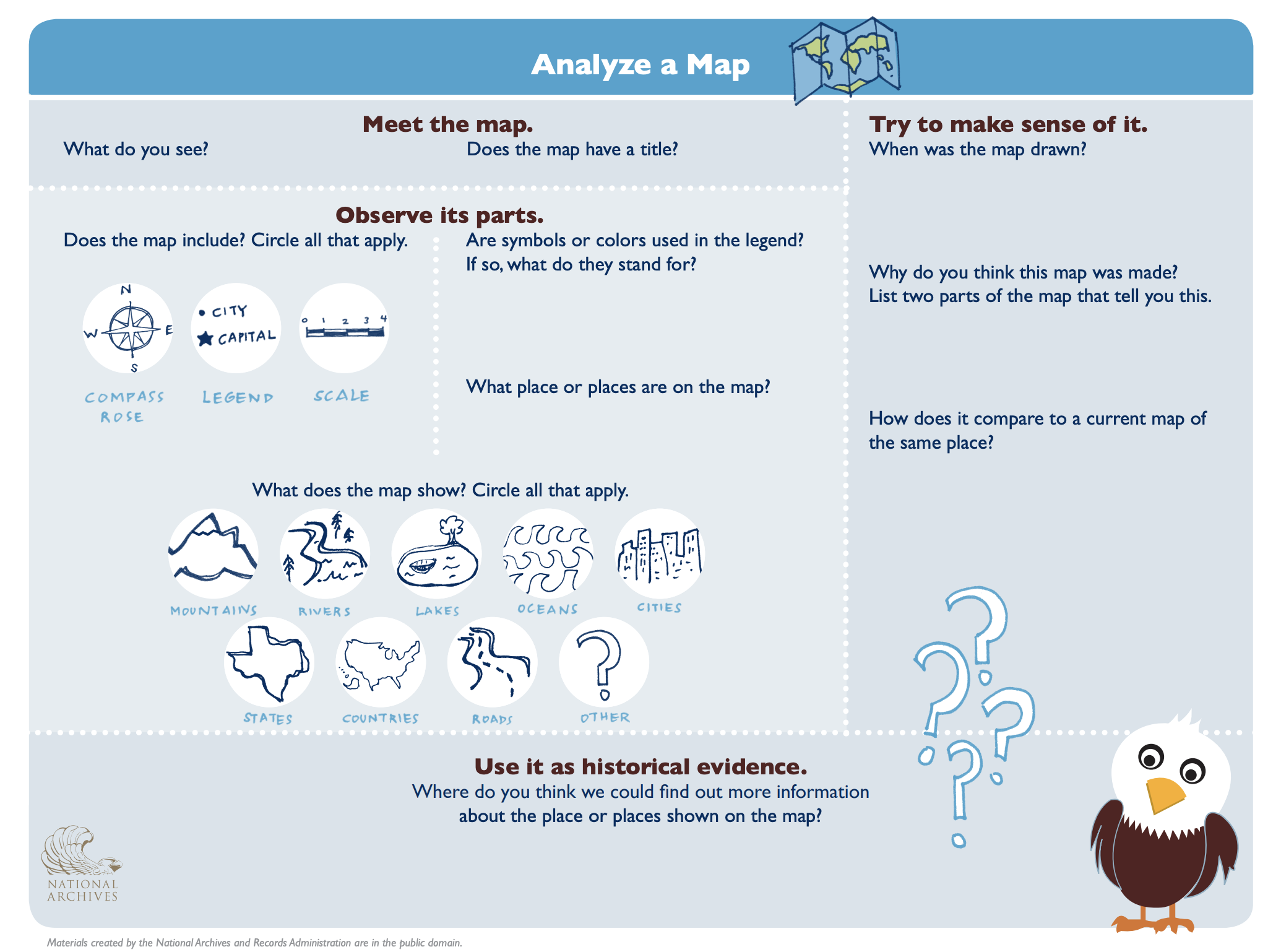
Learning Objectives
- Understand the importance of using maps and primary source documents to support the inquiry process.
Teaching with Primary Source Documents
Primary source documents are original artifacts and first-hand accounts of moments throughout history. Primary source documents include maps, videos, newspapers, magazines, photos, posters, cartoons, and sound recordings that have recorded specific moments in history. Using primary source documents in the classroom helps to transform students into historians. These first-hand accounts allow students to look through the lens of those who lived throughout history and develop a better understanding of a society's social norms, economic development and growth, and various perspectives. For more information, read Getting Started with Primary Sources from the Library of Congress.
Docs Teach, a site developed by the National Archives with a focus on bringing history to life, could be used as a teaching complement to Sanborn Insurance Maps in finding additional primary source documents.
The first step when teaching with primary source documents is for students to understand what they are seeing by analyzing the artifact. The National Archives has several teaching tools and instructional materials for document analysis. A best practice when viewing and looking at any type of primary source document is to go through the following steps:
- Meet the document.
- Observe its parts.
- Try to make sense of it.
- Use it as historical evidence.
These steps, used in daily practice, will help students understand the world around them. A specific instructional material, Analyze a Map, has been added to the exercise files to use and share. Notice on this document that it helps students to dissect and break apart what they are seeing when viewing the map.

It is important to read, write, and think like a historian when using primary source documents. When reading like a historian, there are important things to keep in mind according to Culturally Responsive Disciplinary Literacy Strategies Instruction:
- A consideration of bias, perspective, and political context is all very important. History is interpretative and authors and sourcing are central in interpretation.
- Historical documents need to be looked at as connections between historical events.
- Single texts are problematic and historians use multiple primary source documents to gain a full understanding.
Use the Reading, Writing, and Thinking Across the Disciplines Chart in the exercise files below from the Association of Supervision and Curriculum Development (ASCD) to help students think like a historian. Use the teaching strategies found within this chart when helping students interpret artifacts such as: interpret and analyze documents, identify bias, compare and contrast, create timelines, and define words within context.


Reflecting on Your Learning
Answer the following questions in the
INFOhio Resources for Research Open Space group Discussions. Find the
Using Primary Source Documents in Instruction reflection question in the Discussions tab. Reply to the thread and review other participants' responses.
- What are two ways you can begin integrating more primary source documents into your classroom or instruction?
- What is one challenge you face in using primary source documents as a teaching resource?
- In addition to providing primary source documents to your students, how can you help them read, write, and think like a historian?